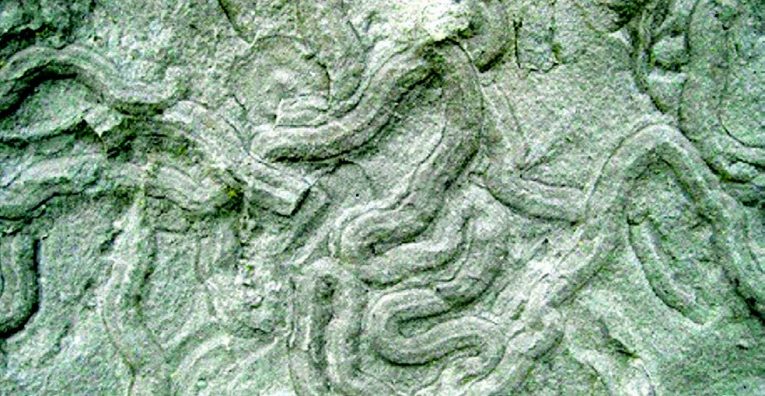Geological footprints leave elegant pattern
09.12.2021Justifiably famous for their elegant patterns, Moher flags have been quarried along the west coast of Clare for centuries. The thin, rigid slabs were ideal for roofing in times past but more recently they are primarily used for paving stones and decorative walls.
The quarrying methods have hardly changed, and the family-owned quarries still extract the slabs manually, using techniques handed down through the generations.
To a geologist, the Moher flags (short for flagstones) are sandstones. That means they are sedimentary rocks composed of grains of sand between 0.06 and 2mm in diameter. The grains of sand are mostly the mineral quartz with some calcite as well as more exotic minerals such as feldspar, biotite and chlorite. These sand grains were eroded from long-gone mountains and transported by extinct rivers into a sea that disappeared over 300 million years ago.
Dr. Shane Tyrell of NUIG and his student Martin Nauton- Fourteu have been studying the ancient transport patterns (provenance) of these grains in similar rocks along the coast of Clare and have shown they were carried here from the south/ southwest. As fascinating as that is, the internal composition of the sandstone is overshadowed by the beautiful, complex patterns on the surface. These patterns are called ‘trace fossils’; that is, they are the marks left by living creatures but not the creatures themselves. They are geological footprints. The patterns are actually burrows, made by an organism as it burrowed horizontally, just below the surface on a sandy coast.
The creature was ‘mining’ the sand for organic matter, taking it in at one end, extracting the food and packing the processed sand behind itself at the other end – this is why the burrows were able to be preserved. The trace fossils are very abundant, so we know the creature was ideally suited to the environment, however, the lack of other fossils or trace fossils indicates difficult living conditions, so this creature must have had some advantage to have been able to thrive.

UNESCO Global Geopark, Clare County Council. The patterns on
If you look closely at the burrows you will see a central ridge. This was likely produced by a siphon of some kind sticking up from the creature as it burrowed, most likely connecting it to the overlying seawater, perhaps giving it access to more oxygen, just like a snorkel. We have never seen any hard-shell fossils in these burrows, and it is tempting to say that the creature did not have a shell. However, calcite shells can dissolve very quickly once buried if the groundwater is slightly acidic and the chance of shells being preserved as fossils is low.
The trace fossils of the Moher flags are an active area of research for us right now, so watch this space for further updates. Why not get a look at the Moher Flag Stones in person by paying a visit to the Cliffs of Moher.